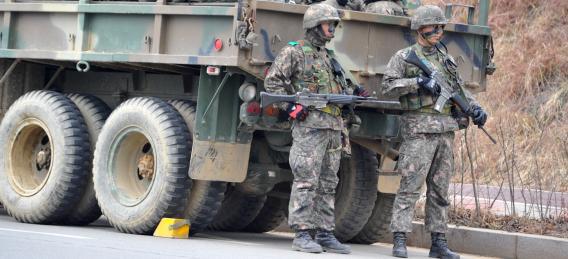North Korea once again managed to garner the world’s attention Saturday by declaring that the Korean Peninsula had entered “a state of war.” Pyongyang also threatened to shut down a joint factory it runs with South Korea, the last significant effort at cooperation between the neighboring countries. And while media outlets across the world highlight that declaration, the truth is Pyongyang didn’t say anything that hasn’t been true for more than 60 years. The armistice that ended three years of fighting in 1953 wasn’t a formal peace treaty, meaning the Korean peninsula has technically been at war since 1950.
So, what’s the point? The Wall Street Journal’s Alastair Gale with some much-needed context:
North Korea has long called for a formal peace treaty to replace the armistice in order to guarantee its own security, but it has been unwilling to give up its nuclear program in order to move that process forward.
Instead, it has tried to move things along by taking another approach: brinkmanship. That gameplan involves creating a major crisis—or the impression of it—in order to try and generate enough alarm for South Korea, the U.S. and others to come scrambling to the table with a peace treaty in hand.
The way to do that, the thinking goes, is to kick away the apparent barriers to full-blown conflict and display a readiness to fight.
The declaration of “a state of war” really doesn’t add anything to the already existing dynamic, particularly because South Korea said it hasn’t detected any unusual military movements in the North. And traffic across the border operated normally Saturday.
Analysts see the threats from Pyongyang as an effort to push the South Korean government to change its policies toward its neighbors, while increasing pressure on Washington to sit down for diplomatic talks, notes the Associated Press. While U.S. officials are growing increasingly concerned about the harsh words coming out of North Korea, they insist that for now they’re trying to focus more on what Pyongyang is doing rather than what it is saying. “Putting on a show is not the same as taking action,” a “senior administration official” tells the Washington Post.
A key question now is how real the threat is to shut down the Kaesong industrial complex that the two countries operate jointly just across the border with South Korea. Its continued operation was long seen as an example of how Pyongyang was all bark and no bite, so whether it remains open will be a crucial test of how far North Korea is willing to take its recent threats against the South, points out the New York Times.
